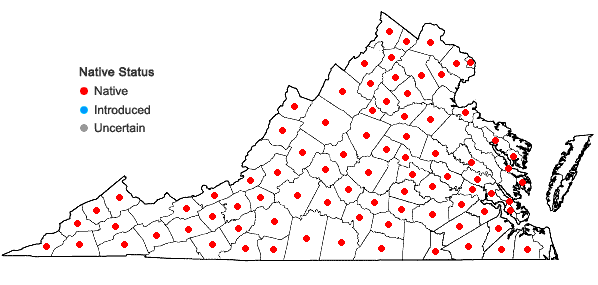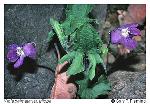Viola palmata L. complex

Detail
- Family
- Violaceae
- Botanical Name
- Viola palmata L. complex
- Common Name
- Wood Violet
- Synonym(s)
- Viola palmata L. var. palmata; Viola palmata L. var. dilatata Elliott; Viola palmata L. var. triloba (Schwein.) Gingins ex A. DC.; Viola triloba Schwein.; Viola stoneana House
- Flora of Virginia Name/Status
- Viola palmata L., s.l.
- Comments
- As treated here, Viola palmata is a somewhat polymorphic species with heterophyllous leaves and wide variability in leaf lobing and other characters. According to Ballard et al. (2020, J. Bot. Res. Inst. Texas 14(2)), the type of V. palmata is a plant collected by Clayton in the Coastal Plain of Virginia that is "typical of one of the many leaf variations to be found on the Piedmont and Coastal Plain of the eastern and southeastern U.S." This variant has been treated as V. palmata var. dilatata Ell.; but according to Flora of the Southeastern U.S. (FSUS), "the type of V. palmata unambiguously refers V. palmata sensu stricto to the common Piedmont and upper Coastal Plain plant with deeply dissected leaf blades; var. dilatata Elliott is thus rendered a synonym of var. palmata, and the widespread northern taxon previously treated as var. palmata must use the earliest available name, var. triloba." The latter is a distinctive variant of the species that is common over much of Virginia and has been widely treated as Viola triloba Schwein. or V. palmata var. triloba (Schwein.) Gingins ex A. DC. Confounding classifications, variants with more greatly dissected leaves are sometimes intermixed with the "triloba" variants in what appear to be the same populations.
The species map provided here represents all variants of the complex. The name has not always been applied consistently to Virginia herbarium specimens, and the map no doubt includes records of Viola stoneana House, the homophyllous-leaved Viola subsinuata Greene (frequent in the mountains), and probably other lobed violets. Following the FSUS treatment for violets of the southeastern U.S., provisional maps are also provided for two varieties: var. palmata (the "dilatata" variant with linear-oblong leaf divisions) and var. triloba (the less divided variant with a broader, more ovate terminal lobe). See comments under those maps and the map of Viola stoneana and V. subsinuata. Further systematic and range-wide study of this complex is certainly warranted. - Habitat
- In a wide range of mesic to dry upland forests, also occasionally in small-stream floodplain forests and dry, rocky woodlands and barrens; most numerous in, but not at all restricted to, base-rich soils. Frequent to common in the mountains and Piedmont, less so in the Coastal Plain.
- Native Status
- Native
To save this map, right-click (control-click for Mac users) on the map and choose "Save Image As...".
